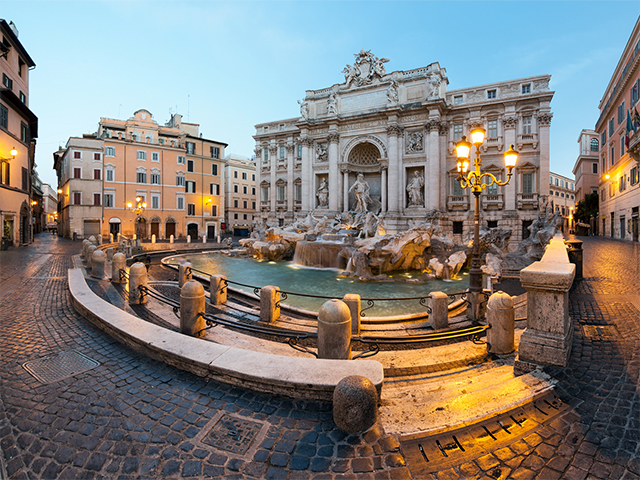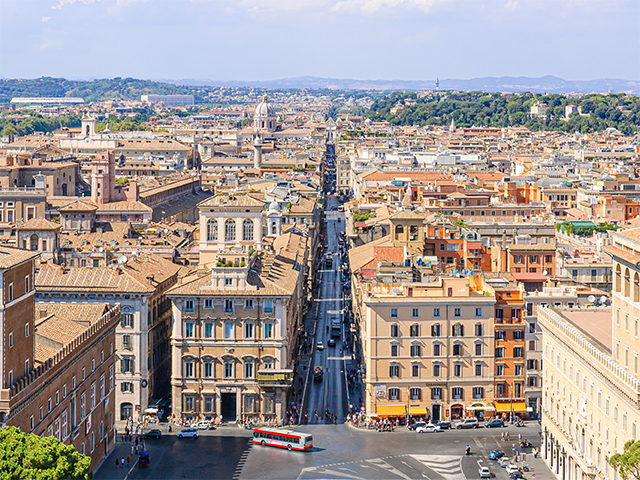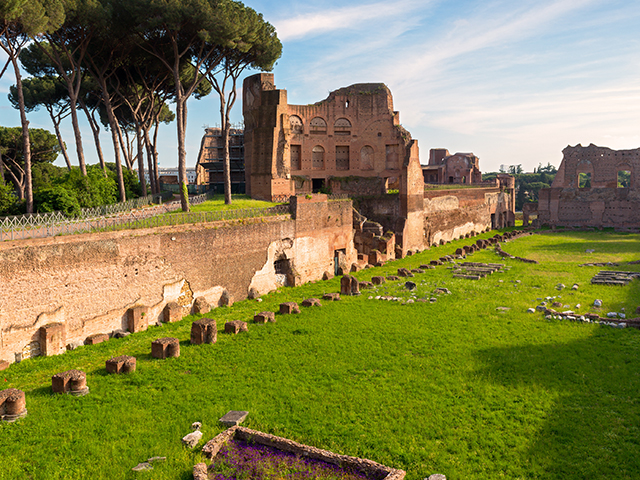Il Vittoriano and Venice Square
Altare della patria (Altar of the Fatherland) and more: opening hours to the exhibitions and what to see during your visit to the Vittoriano complex in Venice Square.Arriving to Venice Square you can't help but noticing this monument, that represents the Italy of the last two centuries with its majesty, cultural and historical significance.
For instance, it was in this square where Mussolini appeared to give his speeches to the nation. Also, from this square start two of the most important and famous streets of Rome: Via dei Fori Imperiali and Via del Corso.
It is in this square where Il Vittoriano was built from 1885.
HISTORY
Il Vittoriano was designed and planned by Giuseppe Sacconi, a young inhabitant from the Marches, who in 1882 won the competition pubblished in honour of Victor Emanuel II, who had died four years before.
Sacconi decided to represent the topics of homeland and unification both allegoricaly and geografically. It is possible to find the following sculpted groups: Thought, Action, Concord, Strenght and shortly after the Adriatic and Tirrenian fountains, the quadrigas of Unification and Freedom that look down to the statues representing the Italian regions.
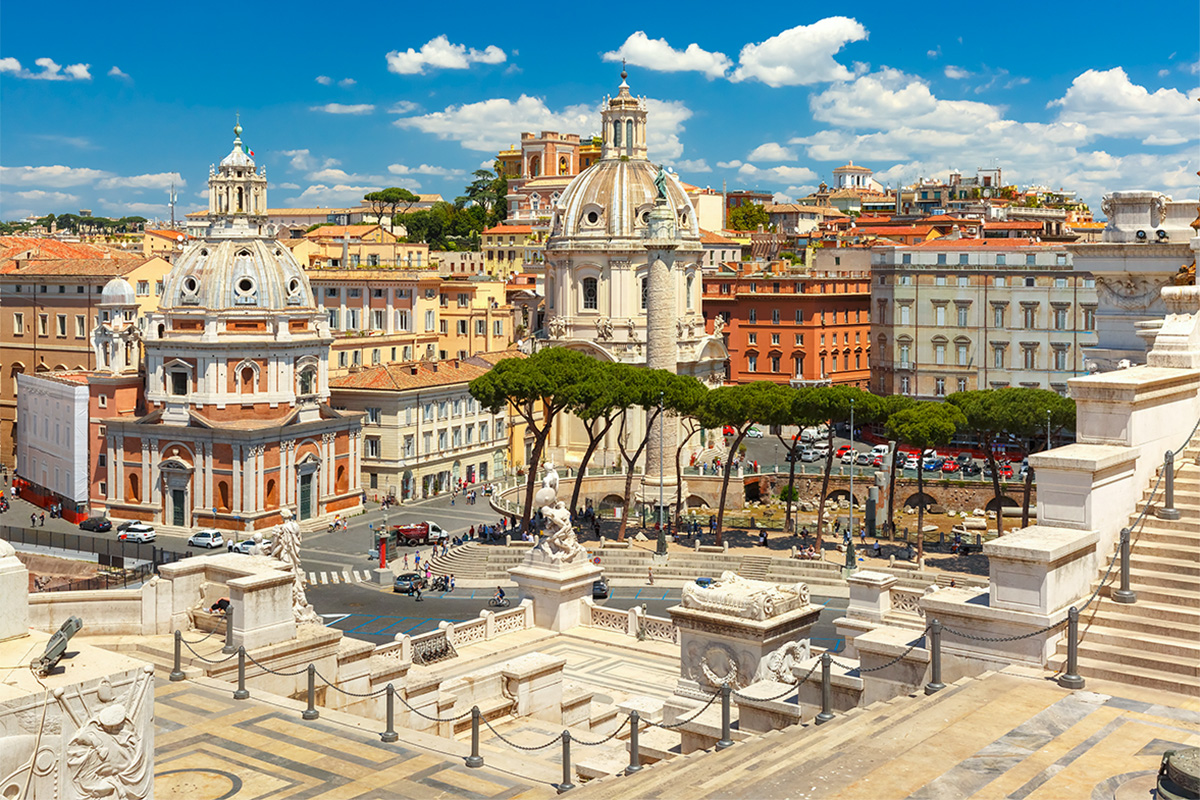
Piazza Venezia seen from the Altar of the Fatherland
Sacconi was inspired mainly by the big Greek sanctuaries and that's why Il Vittoriano was designed as a forum open to citizens and in an elevated position with respect to the square, symbol of Italian Unification.
The monument was built from corpse-white marble, rather than from travertine as originally expected. The works started in 1885 after many expropriations and demolitions of the adjoining areas. Exactly these two facts -the choice of corpse-white marble and the demolitions- were for many years two of the main and harshest criticisms to the project and to the architect.
The construction of il Vittoriano was a hard labour due to the costs of the works: from 9 milions of lire, the expenses went up to 30 milions because the whole Venice Square had to be rebuilt.
In 1911, after well 26 years of works, Victor Emanuel III inaugurated the complex. Between 1924 and 1927 the quadrigas of Unity and Liberty were added. It wasn't until 1935 when thw works were finally finished.
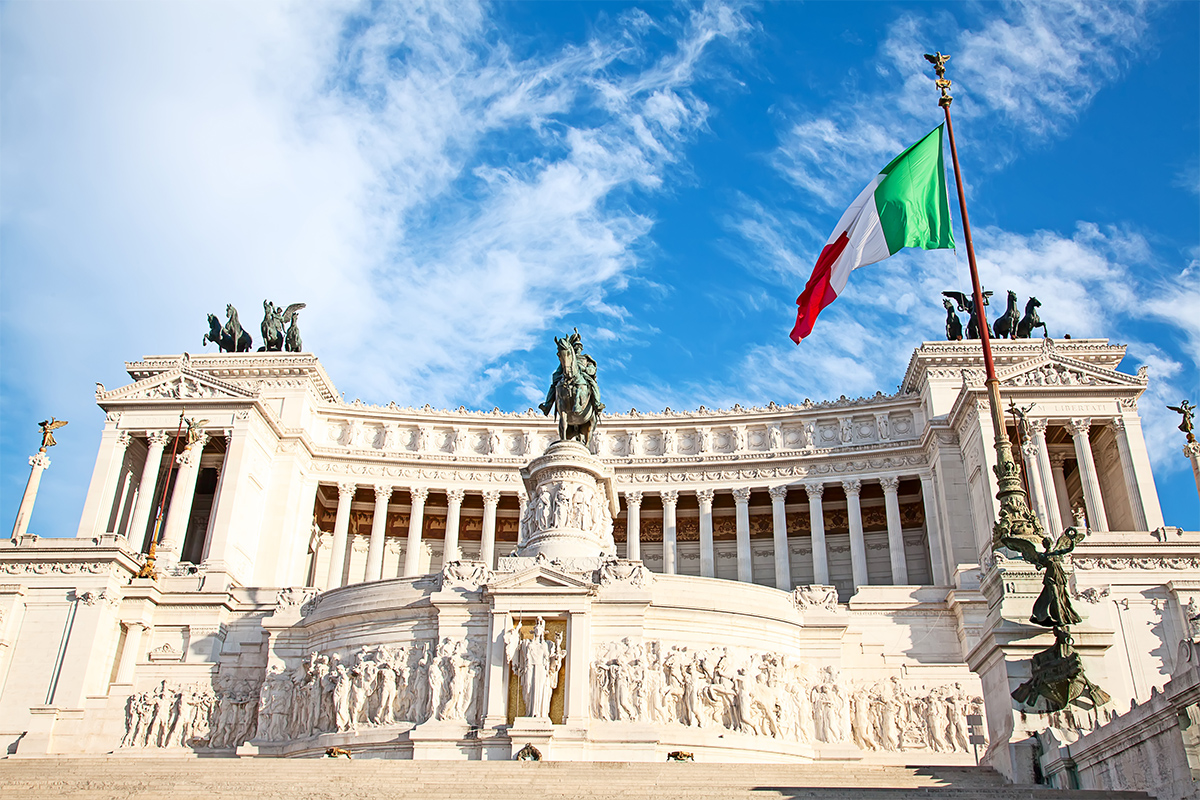
The Vittoriano in all its splendor!
As we have said, the history of Il Vittoriano is linked to the history of Italy. In 1969, after an attack, the entire complex was closed to public. It was Carlo Azeglio Ciampi, in 1997 who reopened it proposing it as a new forum for Rome: "I reopen this extraordinary terrace of Rome, our capital, on top of a monument that is becoming the central meteing point of every Roman with the eternal city".
In the last years, thanks to the reopening in the nineties, the whole complex increased in value, appearing as an example of the art of the first decades of National Unification, a wonderful fusion of art nouveau, eclecticism and neoclassicism.
"I reopen this extraordinary terrace of Rome, our capital, on top of a monument that is becoming the central meeting point of every Roman with the eternal city".
Carlo Azeglio Ciampi, 1997
MONUMENTS
Il Vittoriano is full of monuments built over the years by several artists. To help you identify them, we show you the following picture, where all monuments are indicated:
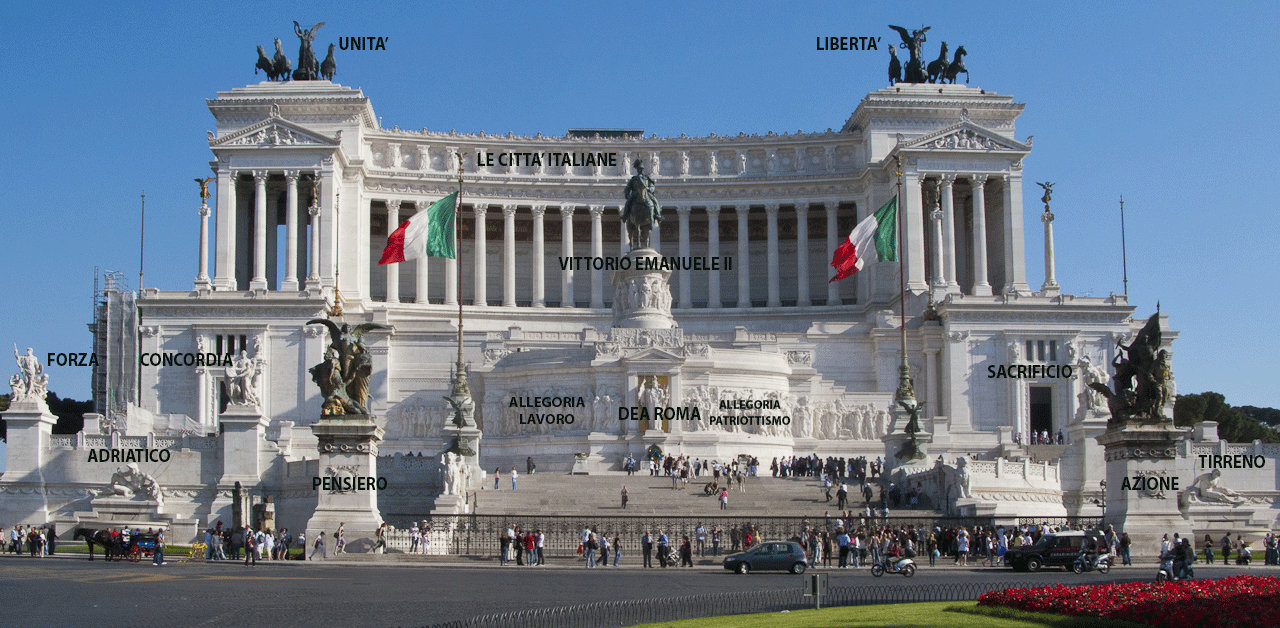
Il Vittoriano and the main monuments
GUIDED VISIT
Enter from the main entry point and start looking around you: on your left you will find the statue that represents Thought while looking to you right, there is the statue representing Action.
Go up some steps and stop: in front of you you will see the beautiful statue representing the Roma deity, on the left, the allegory to work and on the right the allegory to Patriotism.
Go all the way up the staircase and you will find yourselves right in the middle of the Altar of the Fatherland. From here, it is easy to observe the four sculpture groups built from corpse-white marble. From left to right: Strenght, Concord, Sacrifice, Law.
Don't be afraid by two armed guards and two flames: they are guarding the Unknown Soldier, an Italian soldier who died during World War I and due to his serious injuries could not be identified. The Unknown Soldier is symbol to the Fatherland.
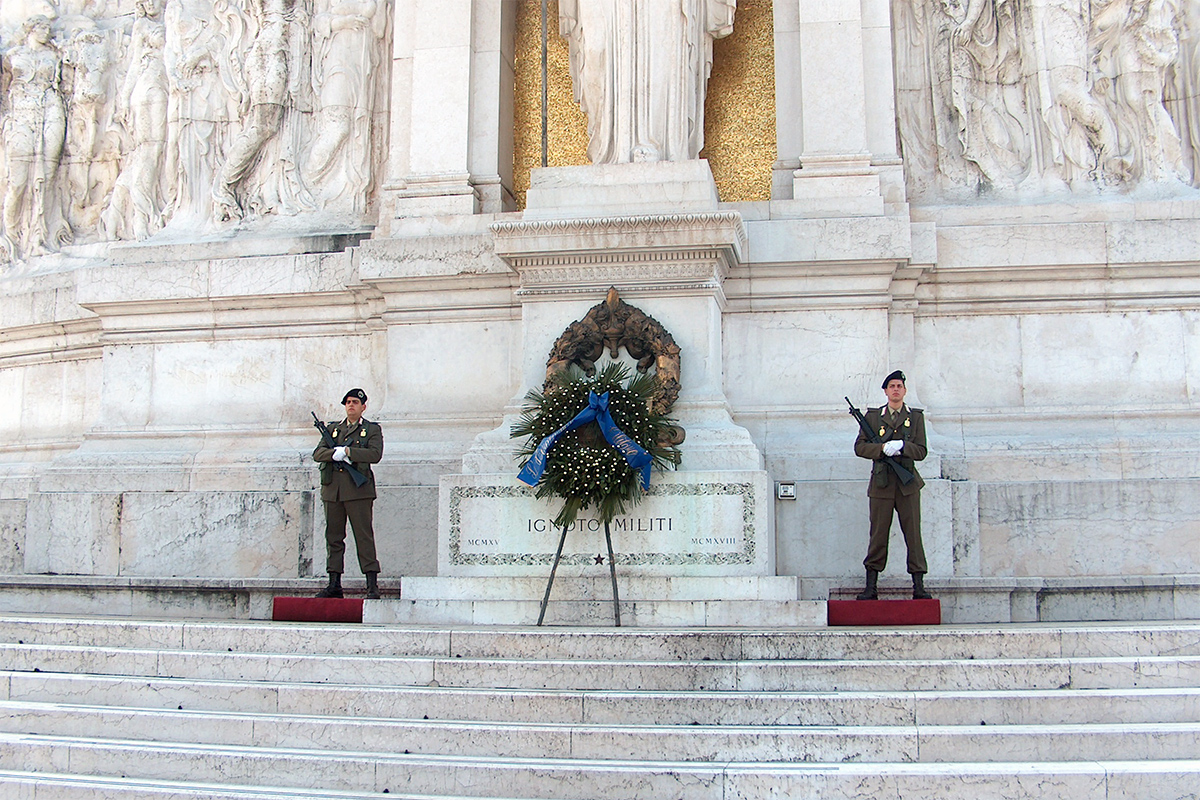
Picket duty keeping the Unknown Soldier - Picture by Renzo Ferrante, CC BY 2.0
Look up and you won't help but seeing the colossal statue devoted to Victor Emanuel II.
Go up the steps that lead to the terrace and you will get to the porch, that is the big colonnade between the two small temples. In the interior of the porch you can observe the statues of the regions while in the higher part are represented some Italian cities.
Finally, getting to the terrace you will have the chance to observe very closely the two quadrigas devoted to the unity of the fatherland (on the left) and to the citizen's freedom (on the right).
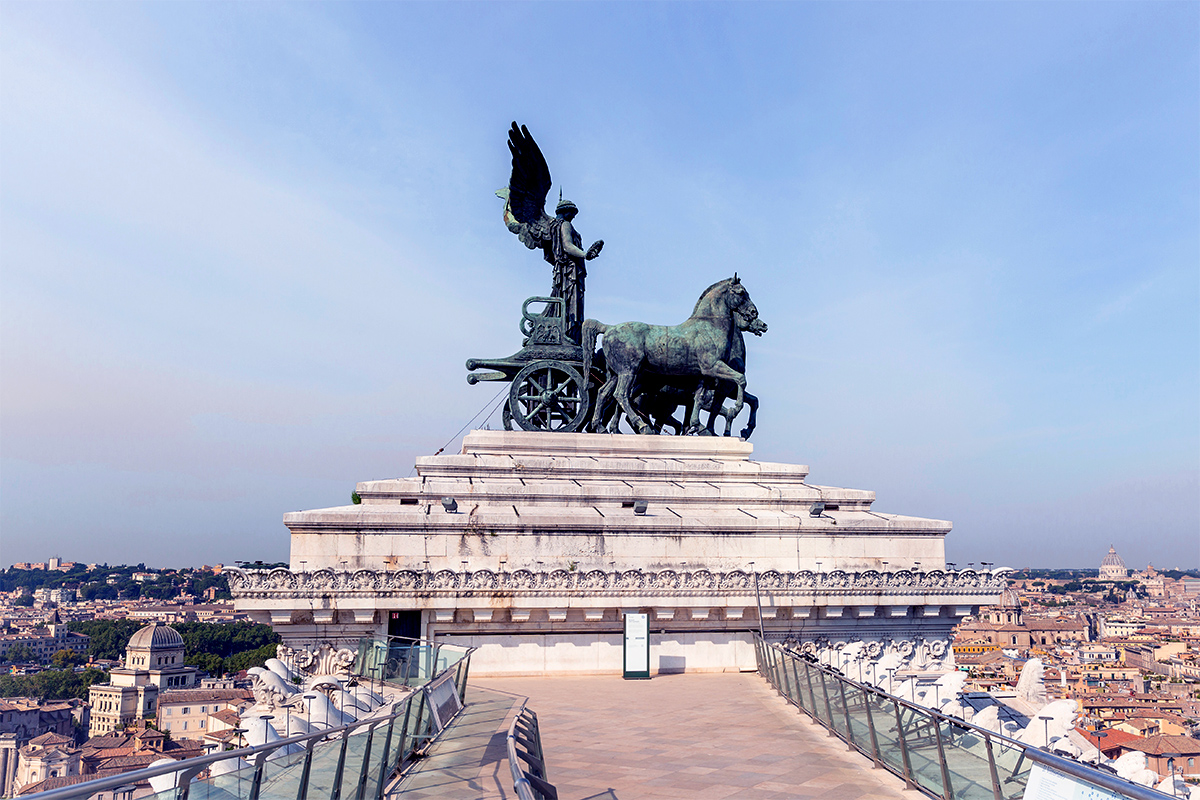
The terrace on top of il Vittoriano with the Quadriga of Freedom at the back
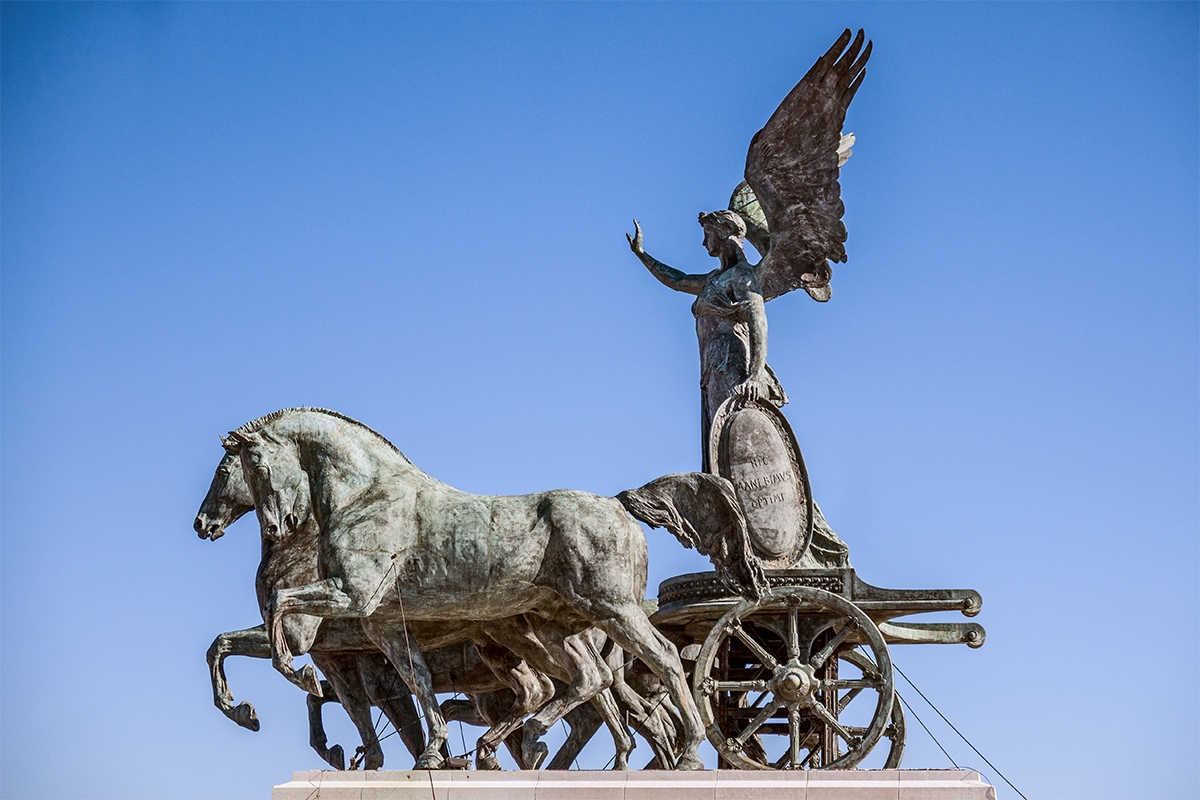
The quadriga of Unification
Inside the monument there are some wxhibition spaces devoted to the history of the Vittoriano itself, the Sacrario delle bandiere (a museum of war flags) and the location of the Central Museum of the Risorgimento, that goes through the itinerary that lead to the Italian unification and holds often very interesting exhibitions.
Useful information
You can visit the terrace of the quadrigas using panoramic lifts.
After visiting il Vittoriano you will face a hard choice: if you are interested in shopping go to Via del Corso; if you otherwise want to continue your cultural tour, walking along Via dei Fori Imperiali by foot you will get right in front to the Colosseum.
- HOW TO GET THERE
From the port go to Civitavecchia Train Station.
Take the first direct train bound for Roma Termini.
Take the Metro B and get off at the stop Colosseo.
Go by foot to Piazza Venezia (at your back you will have the Colosseum and on your left the Imperial Fora).- TIMETABLES
- VITTORIANOWinter opening hours: Monday-Sunday 9.30-16.30 (last admission 16.00)
Summer opening hours: Monday-Thursday 9.30-17.30, Friday-Saturday 9.30-23.30, Sunday 9.30-20.30
Museum opening hours: 9.30-18.30
Exhibitions opening hours: Monday-Thursday 9.30-19.30, Friday-Saturday 9.30-23.30, Sunday 9.30-20.30 - PRICES
Admission to Il Vittoriano is free, as well as the admission to the Museum of Risorgimento.
Exhibitions: €10, reduced €3.50, free below 10 years old.



 PORT MOBILITY CIVITAVECCHIA
PORT MOBILITY CIVITAVECCHIA








